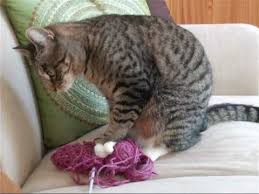
Knit one, purl two?
Fiction is a little like knitting: most people will ignore a certain number of mistakes, but the overall piece needs to hang together. In writing stories, readers will tolerate some imperfection, but some elements, if left undone, create story holes so big that readers will look elsewhere.
Writing Tip for Today: Let’s examine three things your fiction must contain to keep readers reading:
Compelling Characters
You’ve probably heard that your Main Character (aka Protagonist) must be likable. While not always true, it is necessary to give your character qualities that most everyone can identify with. These can include but aren’t limited to, a character who is loyal, has respect, courage, determination, kindness, integrity, forgiveness, among others. Donald Maass says readers are most influenced by a character who has a high personal code of ethics and is principled. In life we emulate these kinds of people, so fictional versions get our attention and they make us care. A character who has principles knows herself, respects others, and can sympathize with problems, but has a personal boundary she will not cross. By giving your character at least some of these qualities, readers will be more apt to care, but only if you allow the reader to know your character as well as you do. If you make your MC a person of principles, passion and purpose, readers will care because the protagonist cares.
High Stakes
I’ve discussed story stakes many times, but if your story has low stakes, it takes much more skill to create a good answer to the question, “Why should I care?” or SO WHAT? If your character is out to save the world (or the shire or the planet), it may look as if the stakes are high. When I ask what the character will do to gain the story goal, many of my students will answer, “He’s willing to die.” Yet if the stakes themselves aren’t dire enough, readers won’t understand what all the fuss is about. As you construct your premise, remember that the issues, things or persons at stake need to be legitimately high. By that I mean if you are writing a romance and the stakes are that the girl will be lonely if she can’t snag her true love, then it’s up to the writer to show how lonely she already is and how she can’t stand much more. If you don’t, readers may scoff and say, “Just get a dog.” In murder or adventure genres, the antagonist must be able to withstand a lot of what your character throws at him. If it’s too easy, cliché (overused) or implausible, the stakes immediately head to the bottom. Be sure to keep asking SO WHAT? As you devise what’s at stake and your character’s obstacles.
Pace, Pace, Baby
The rate at which your story unfolds is another crucial element readers demand that you get right. If your story and your character are solid but the chapters drag on or get mired in backstory, fascinating research, subplots or other distractions (too many POV narrators can spoil the broth), readers won’t be able to see the forest for the trees. If you pace your story too quickly, the rich inner life of your character will be shallow at best. If you linger too long over inner conflict or take too long to reveal crucial plot advances, readers will give up. The correct pace for fiction is somewhat dictated by genre, but not always. For hints on pacing, watch a lot of movies and note the pace or how quickly or slowly info is revealed. When your first draft is complete, make scene cards so that you can see at a glance how the story unfolds. And of course, read widely and often. With a compelling character, sufficiently high stakes and good pacing, readers will be turning pages and soaking up your fiction, even if you’ve knitted instead of purled a stitch or two.





Great article. Now I have to go back and apply it to my newest novel. Knit one, purl two… or is it purl one, knit two? Oh, never mind. 🙂
Patrick,
Who says writing (or knitting) isn’t fun? Thanks for coming by!
And do keep writing.
Linda
Thanks, Linda.
It’s encouraging to know that watching movies can be considered research. Yeah, that’s it. Research. Good reason for taking an occasional break.
Kathy,
It’s research unless it’s a Netflix binge. Keep Writing!
Linda